30-second summary:
- An under-optimized UX can sometimes limit the user’s journey by creating roadblocks to conversions.
- Internal site search is one of the hidden gems every SEO should know about.
- Not only does it improve UX and conversions but literally shows us what’s missing in our content strategy and product range.
- CRO Expert Marco Bonomo reveals the top eight tips on internal site search optimization.
Making content easy to access and discovering content gaps are one of the greatest challenges in SEO. Aside from that, an under-optimized UX can sometimes limit the users journey by creating roadblocks to conversions. Thankfully, Internal site search can be used to reveal these gaps, and help in making the most of the existing traffic. Here are the top eight tips to take advantage of:
1. Make internal site search part of your optimization routine
Once you’ve set up the internal site search functionality and mastered the internal site search basics, it’s time to make site search part of your optimization routine. Important metrics such as exit rates, search refinements, or the “zero-result” search queries are particularly relevant in adding an extra layer of information to your audits and reports and help you in making more data-driven recommendations.
2. Dive into users’ behavior using the Google Analytics segments
Google Analytics segments come in handy when you’re looking to filter a portion of the traffic by a specific behavior, for example by selecting “Organic Only” visitors. What is less known though, is that Google updated the default segment “Performed Site Search” from “sessions” to “users” not long ago. Even if this might seem like a small change, it means that you might look at users with several sessions and purchases in their history, but who are still looped in this segment because of the way it is measured.
To mitigate this issue, you can copy the “Performed Site Search” segment and make it more targeted in two simple steps. The first one would be switching from “users” to “sessions”, while the second one (optional) consists in adding a “Bounces = 0” condition to exclude users that are less relevant for your site search analysis. For more info about the implementation, I recommend having a read at this piece from Loop54.
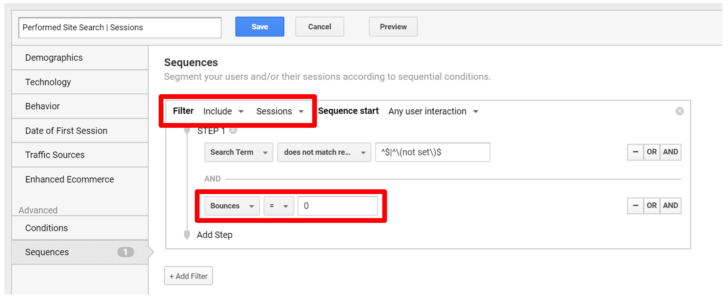
3. Analyze the internal site search flow in Google Analytics
Another report I recommend dive into is the Audience’s “Users Flow”. This particular report allows you to analyze the user’s behavior like never before and reveal further gaps in your UX and internal linking. To access the report, click on Audience > Users Flow and add your site’s custom search path (for example “/?s”) into the pop-up window from the node you are interested in querying, as per the screenshot below.
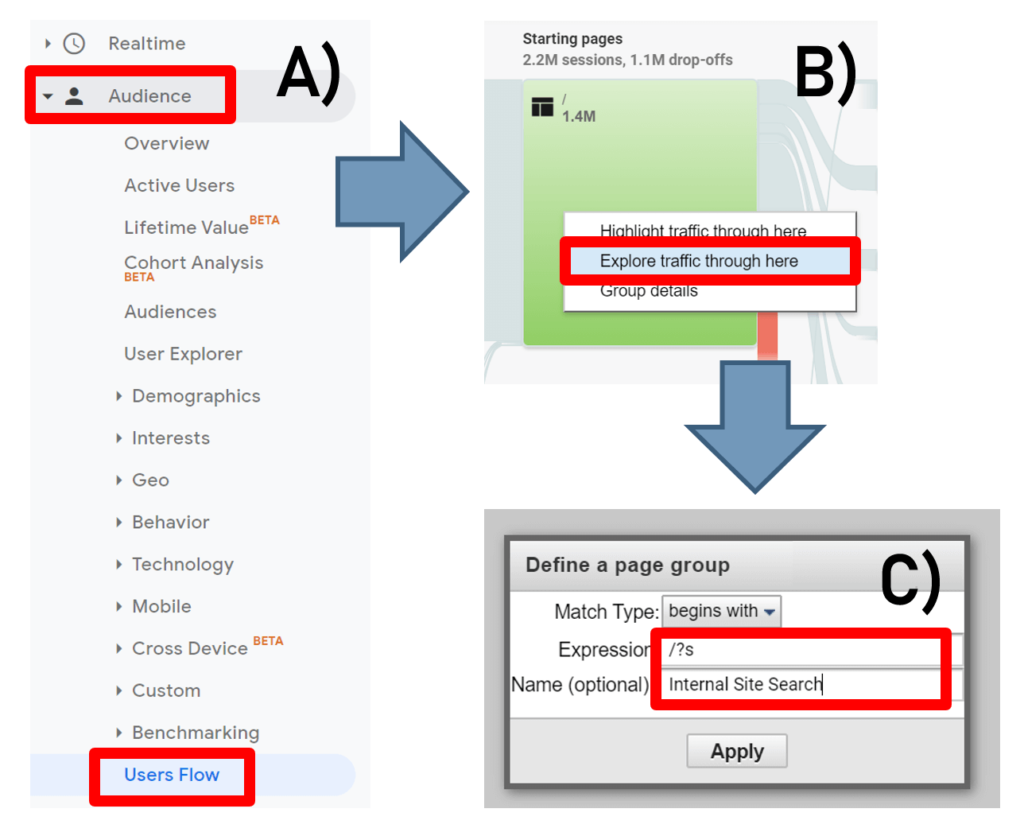
As a result, you should be able to see the specific path the visitors made after triggering the on-site search (see example below). For more information about the setup, I recommend having a look at this post from Bounteous.
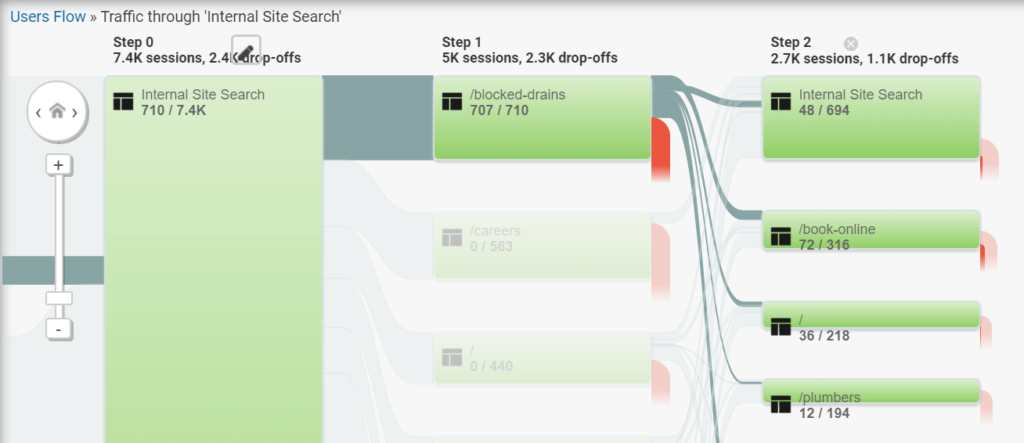
4. Use Google Tag Manager to unveil zero-result search queries
Looking at search terms is a great way to have an understanding of what users are looking for, but what about the internal search queries that produced no results at all? Luckily, there’s a quick fix for this as creating a custom Google Tag Manager tag and an event on Analytics enables you to track these queries and identify even more gaps in your content or product ranges. To have this implemented (Analytics does not come with “zero-result” reports out of the box), have a read of the guide ‘How to implement the zero-result google analytics track’ by Dmitri Ilin.

5. Implement a smart site search solution
Using third-party software can enhance internal site search like never before. Especially for ecommerce websites, navigating through thousands of products can now be done in a more efficient way by simply implementing features that help improve the conversion rate. Features like auto-suggest or providing query results for different categories (see screenshot below) are now a must-have for ecommerce brands, as they aid in maximizing the site search revenue.
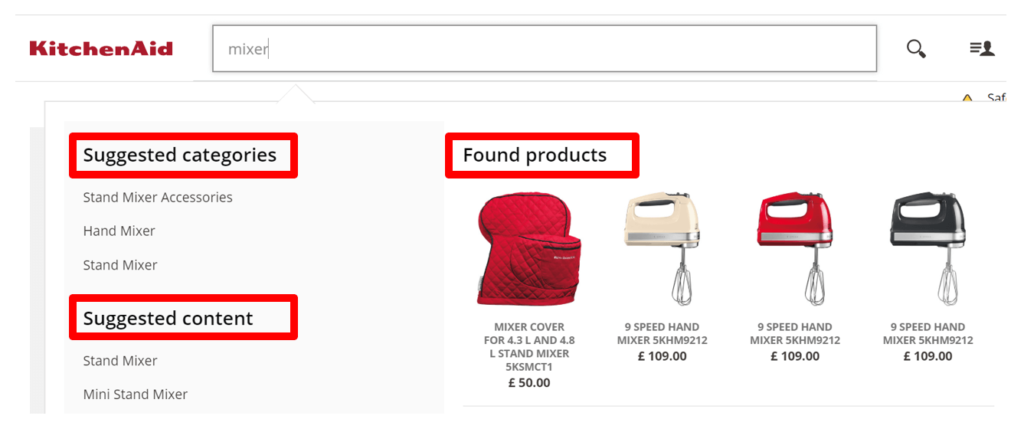
6. Add a voice search functionality to your internal site search
Especially if you’re working in a B2C niche, it’s definitely worth considering adding a voice search feature to your internal site search. Considering that mobile and tablet are now already generating over 50% of your traffic, it makes sense to make site search even more accessible by adding a feature that can only grow over time.

7. Consider disabling the Google search box
Even though disabling the Google search box might sound like a bizarre idea, I recommend considering this in particular cases. For example, big ecommerce like Amazon might want to leverage the homepage to display personalized deals. Doing so, Amazon encourages users to purchase items they didn’t even think about, but that was made irresistible by a clever combination of search history and flash discounts. To have a look at this, simply follow the Google site links search box guidelines and test it for a short period of time to see if this solution works for your ecommerce too.
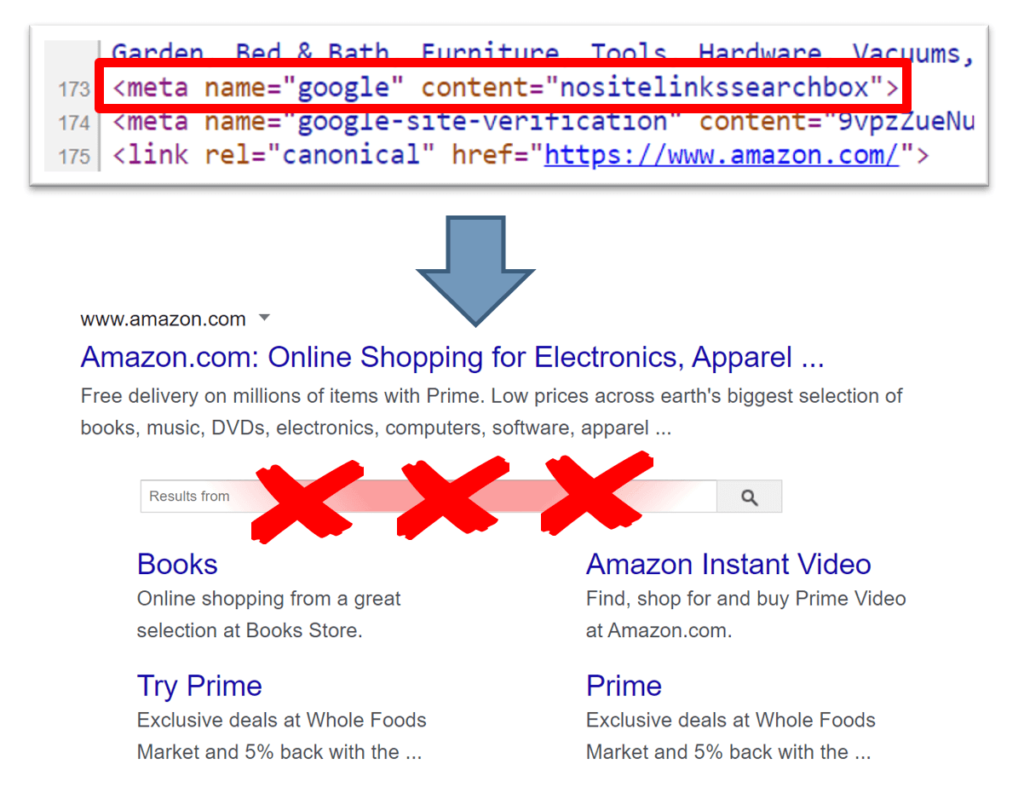
8. Use Google Data Studio for internal site search reporting
In order to make sure that an on-site search is part of your optimization routine, I also advise you to create a dedicated Google Data Studio dashboard for your weekly or mon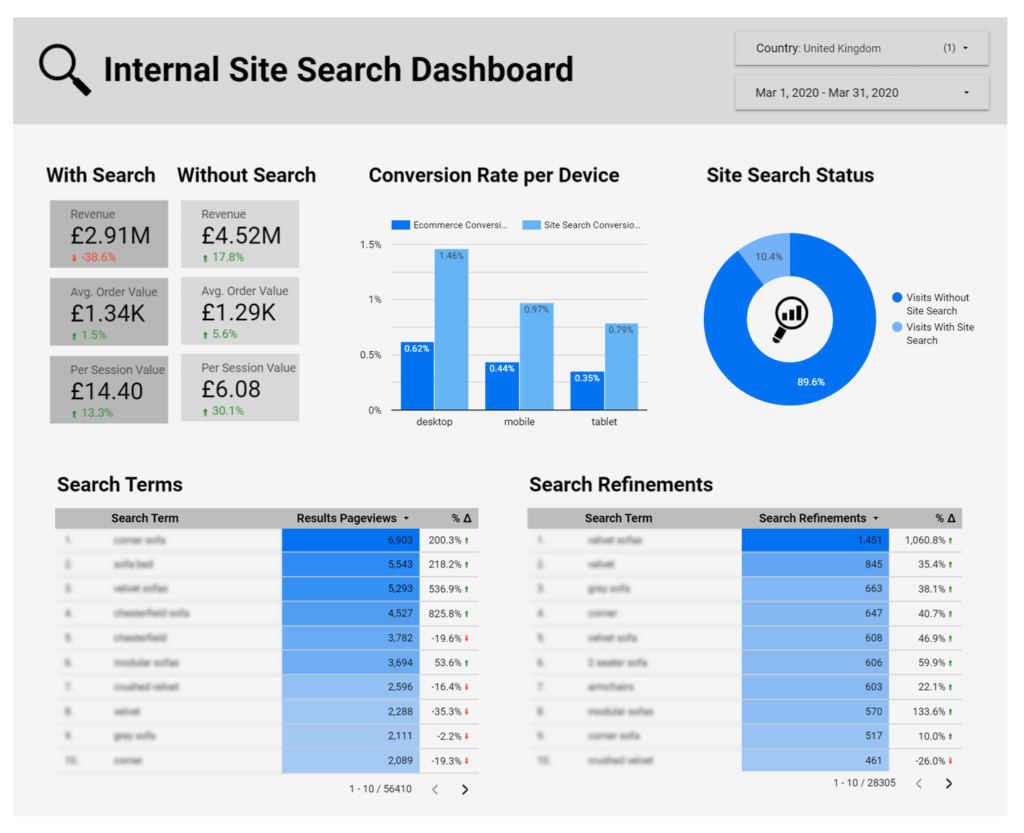 thly reporting. The key metrics I suggest to display are the top search terms, search exits, search refinements, revenue, with the ability to filter by country and dates.
thly reporting. The key metrics I suggest to display are the top search terms, search exits, search refinements, revenue, with the ability to filter by country and dates.
Wrapping up
Internal site search is one of the hidden gems every SEO should know about. It not only represents another way to improve UX and conversions but literally shows us what’s missing in our content strategy and product range. So why not start using these practical tips, and make the most of this underrated tool today?
Marco Bonomo is an SEO & CRO Expert at MediaCom London. He can be found on Twitter @MarcoBonomoSEO.
The post Eight great tips for internal site search optimization appeared first on Search Engine Watch.



